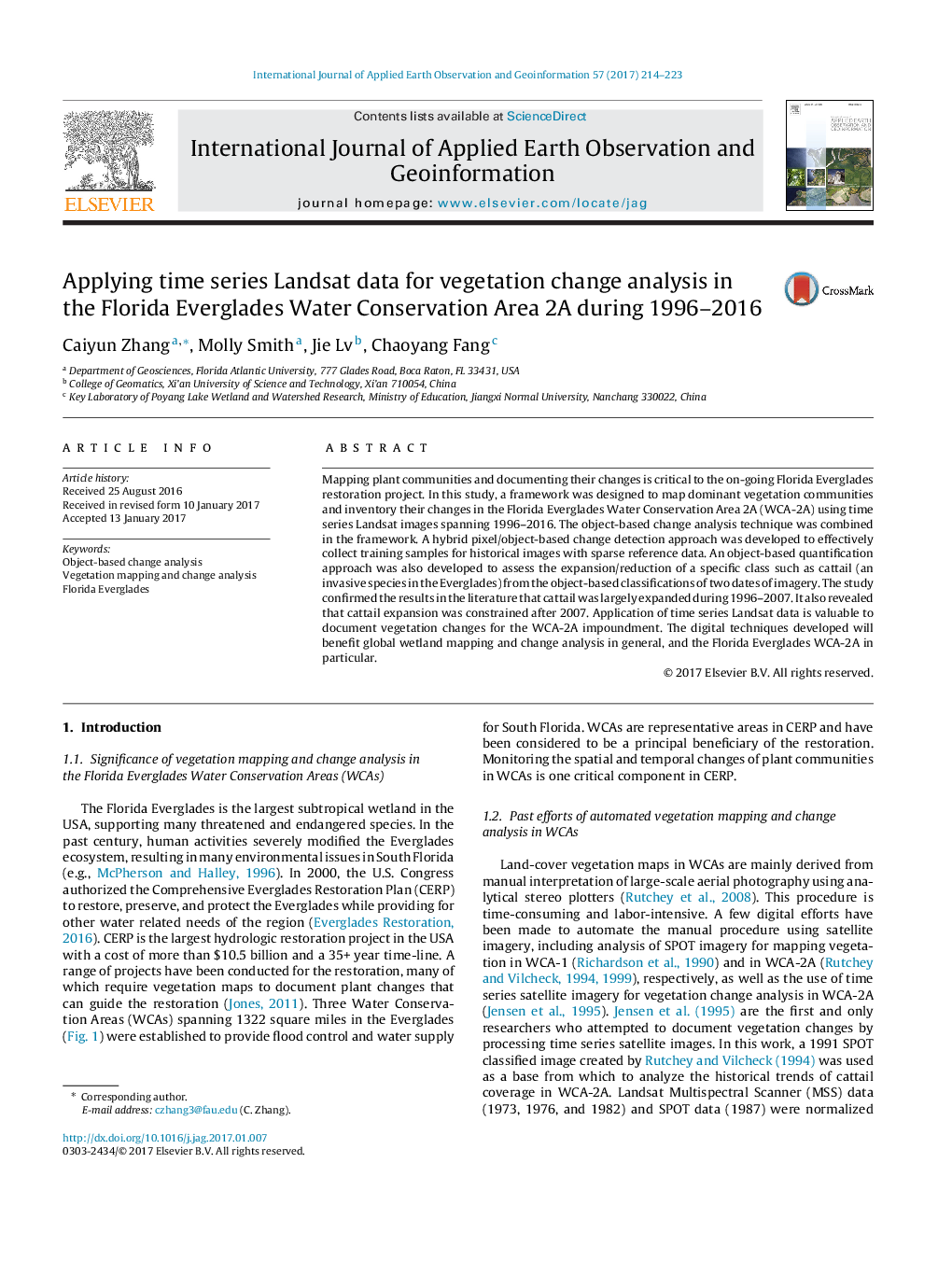| Article ID | Journal | Published Year | Pages | File Type |
|---|---|---|---|---|
| 5755565 | International Journal of Applied Earth Observation and Geoinformation | 2017 | 10 Pages |
Abstract
Mapping plant communities and documenting their changes is critical to the on-going Florida Everglades restoration project. In this study, a framework was designed to map dominant vegetation communities and inventory their changes in the Florida Everglades Water Conservation Area 2A (WCA-2A) using time series Landsat images spanning 1996-2016. The object-based change analysis technique was combined in the framework. A hybrid pixel/object-based change detection approach was developed to effectively collect training samples for historical images with sparse reference data. An object-based quantification approach was also developed to assess the expansion/reduction of a specific class such as cattail (an invasive species in the Everglades) from the object-based classifications of two dates of imagery. The study confirmed the results in the literature that cattail was largely expanded during 1996-2007. It also revealed that cattail expansion was constrained after 2007. Application of time series Landsat data is valuable to document vegetation changes for the WCA-2A impoundment. The digital techniques developed will benefit global wetland mapping and change analysis in general, and the Florida Everglades WCA-2A in particular.
Keywords
Related Topics
Physical Sciences and Engineering
Earth and Planetary Sciences
Computers in Earth Sciences
Authors
Caiyun Zhang, Molly Smith, Jie Lv, Chaoyang Fang,
